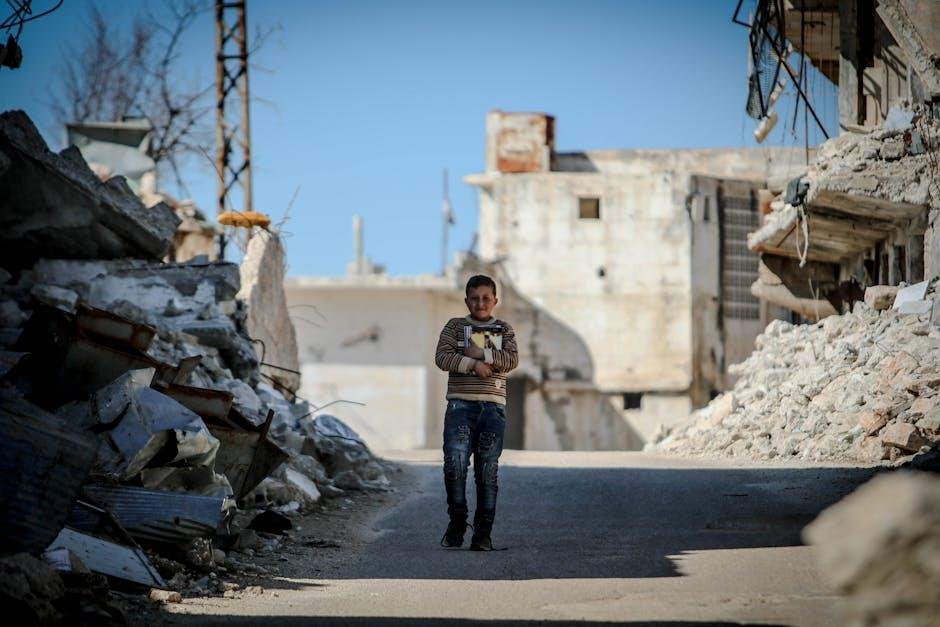In the intricate tapestry of human experience, childhood serves as both the foundation and playground of our emotional lives. However, for many, this early stage is marred by trauma—an event or series of events that upends the innocence of youth. As the years progress, the shadows of that trauma can loom larger, shaping not just the contours of one’s personality but also the very essence of adult mental health.In this exploration, we delve into the nuanced interplay between childhood adversity and its long-lasting effects on psychological well-being, seeking to illuminate the pathways from silent suffering to understanding and healing. By unpacking the mechanisms of this relationship, we aim to foster deeper awareness and empathy for those navigating the complex legacy of their early years. Join us as we embark on this vital journey to uncover how the echoes of childhood trauma reverberate throughout adulthood,influencing emotions,behaviors,and the overall tapestry of mental health.
Understanding the Long-Lasting Effects of Childhood Trauma on Mental Well-Being
Childhood trauma can reverberate through an individual’s life, considerably impacting their mental well-being well into adulthood. The experiences of neglect, abuse, or significant loss can instill deep-seated emotional wounds that manifest in various ways.For many, the aftereffects can include anxiety, depression, and difficulties in forming healthy relationships. These impacts are not merely transient; they ofen require extensive therapeutic interventions to unravel and heal. Understanding this connection is crucial for developing effective support systems that can nurture recovery and resilience.
Research indicates that the effects of early trauma can alter brain progress, thereby influencing behavior and emotional regulation. Individuals may find themselves in a cycle of recurring unhealthy patterns, such as substance abuse or self-sabotage. To shed light on the complexities of this issue, consider the following table that highlights some common mental health challenges faced by adults with a history of childhood trauma:
| Challenge | Description |
|---|---|
| Anxiety Disorders | Persistent feelings of dread or panic attacks. |
| Depression | Chronic feelings of sadness and hopelessness. |
| Post-traumatic Stress Disorder (PTSD) | Flashbacks, nightmares, and emotional numbness in response to trauma. |
| Difficulty with Relationships | Challenges in trusting others and maintaining connections. |

Exploring the Links Between Trauma, brain Development, and Emotional Regulation
The interplay between trauma and brain development is profound, notably during childhood, when critical growth and maturation of the brain are underway. Traumatic experiences can disrupt the natural trajectory of brain development, leading to alterations in essential areas responsible for emotional regulation. Children exposed to trauma may experience heightened activation of the amygdala, the brain’s fear centre, while simultaneously seeing reduced connectivity in the prefrontal cortex, wich is vital for managing emotions and making rational decisions. This disconnection can manifest in various ways, including:
- Increased anxiety and fear responses
- Difficulties in regulating emotions
- Impaired impulse control
- Challenges in forming healthy relationships
Moreover, the long-lasting consequences of these neurological changes frequently enough extend into adulthood, significantly affecting mental health. Adults who experienced childhood trauma may find themselves struggling with emotional dysregulation,leading to various mental health challenges such as depression,PTSD, and borderline personality disorder. Understanding the brain’s response to trauma can pave the way for effective therapeutic approaches that address these emotional regulation challenges. Observing this connection underscores the importance of early intervention and trauma-informed care in shaping healthier emotional lives. The following table summarizes key differences in brain development linked to trauma:
| Brain Area | effect of trauma | Impact on Emotion |
|---|---|---|
| Amygdala | Hyperactivity | Heightened fear responses |
| Prefrontal Cortex | Reduced connectivity | Impaired emotional regulation |
| Hippocampus | Size reduction | Memory and learning issues |

Strategies for Healing: Therapeutic Approaches to Addressing childhood Trauma
Healing from childhood trauma involves a multifaceted approach that intertwines psychological, emotional, and social dimensions. Cognitive-Behavioral Therapy (CBT) is one effective method, empowering individuals to reframe negative thoughts and beliefs rooted in their early experiences. This approach encourages patients to recognize and alter harmful patterns of thinking, promoting healthier cognitive frameworks. Additionally, Trauma-Focused Cognitive Behavioral Therapy (TF-CBT) integrates trauma-sensitive interventions with traditional CBT, providing a safe habitat for processing distressing memories while also developing coping skills. The blend of therapy and supportive relationships can facilitate profound healing and personal growth.
Another promising approach is Eye Movement Desensitization and Reprocessing (EMDR), which helps individuals reprocess traumatic memories, reducing their emotional charge and allowing for better integration into one’s life narrative. Group therapy can also be immensely beneficial, providing a community of support and validation. In these settings, individuals can share their experiences and learn from others with similar backgrounds.lastly, incorporating mindfulness and somatic techniques helps individuals reconnect with their bodies and emotions, fostering a sense of safety and awareness. These strategies, when combined thoughtfully, create a robust framework for addressing the lasting impacts of childhood trauma.

Building resilience: Practical Steps for Adults to Overcome the Shadows of the Past
Overcoming the impact of childhood trauma requires a multifaceted approach, allowing adults to reclaim their lives and foster emotional healing. One effective strategy is the practice of mindfulness, which encourages individuals to stay present and acknowledge their feelings without judgment. Engaging in activities such as meditation, yoga, or deep-breathing exercises can significantly enhance self-awareness, enabling a deeper connection with one’s thoughts and emotions. Additionally, establishing a strong support network composed of friends, family, or support groups can create a sense of belonging and validation, helping adults understand that they are not alone in their struggles.
Building emotional resilience also involves developing healthy coping mechanisms. Adults can benefit from the following practices:
- journaling: Writing about experiences and feelings can provide clarity and release pent-up emotions.
- Engaging in Therapy: Working with a mental health professional can offer guidance,support,and effective therapeutic tools.
- Setting Boundaries: Learning to say no and prioritizing self-care can prevent feelings of overwhelm.
- Enhanced Physical Activity: Regular exercise can improve mental health by releasing endorphins, which combat stress.
the journey towards resilience is not linear, and understanding the potential pitfalls can aid in navigating the path. Understanding triggers and recognizing when past traumas resurface can empower adults to respond constructively. Below is a simple table outlining common triggers and associated strategies for management:
| Common Trigger | Management Strategy |
|---|---|
| Stressful Situations | Practice deep breathing |
| Relationships | Communicate openly |
| Negative Thoughts | Challenge with positive affirmations |
| Isolation | Reach out for support |
To Conclude
In the intricate tapestry of human experience, childhood trauma often weaves a darker thread, leaving indelible marks that ripple through time. As we’ve explored throughout this article, the impact of early adversities can shape an individual’s mental health trajectory in profound ways. These experiences do not merely vanish with the passage of years; rather, they influence thoughts, behaviors, and emotional responses in adulthood, highlighting the importance of understanding and addressing these scars.
Yet, there is hope. Recognizing the links between past trauma and present struggles is a pivotal first step towards healing. Through conscious awareness,therapeutic interventions,and supportive community ties,individuals can begin to untangle the complex legacy of their childhood experiences. It is essential to foster compassion, both for ourselves and for others who carry the weight of their past, as we strive to break the cycles of hurt that can span generations.acknowledging the lasting effects of childhood trauma is not merely an exercise in reflection but a call to action. By championing mental health awareness and fostering environments of understanding and support, we can illuminate paths toward recovery and resilience. As we move forward, let us carry this knowledge with us, transforming the narrative from one of pain to one of hope, healing, and ultimately, empowerment.

